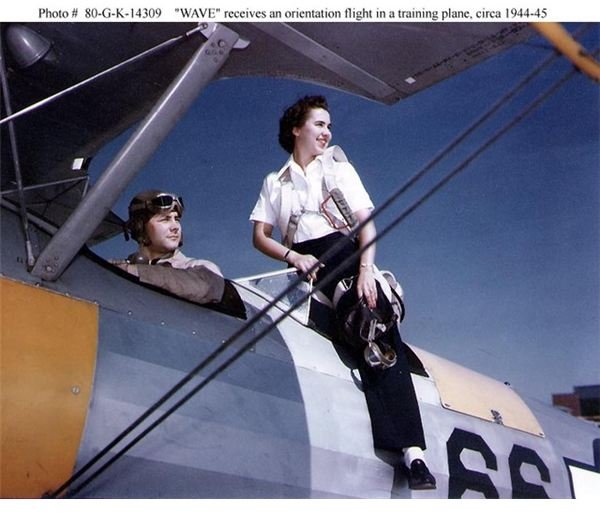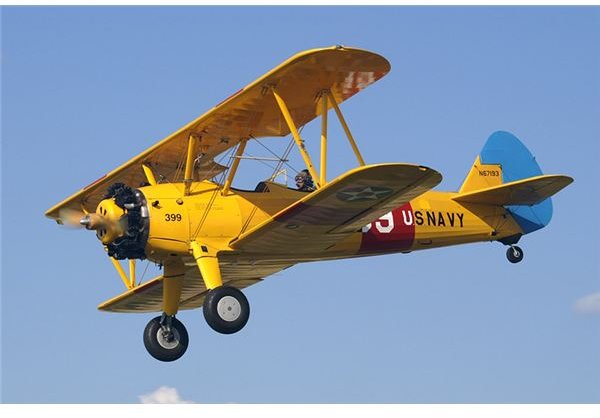History of the Stearman Biplane: One of Aviation's Greatest Names
What Was the Stearman Biplane?
The Stearman biplane is an aircraft built by Boeing in the 1930s and 1940s. It was used primarily as a military trainer plane by the United States Army Air Force prior to and during World War II. They were also adopted by the US Navy and Royal Canadian Air Force. Due to its early success in helping teach fledgling US pilots to fly, creating an aviation force that was essential to the military, thousands of these aircraft were built. In total 9,783 Stearman Model 75 planes were constructed.
The design, often called the Kaydet, was a basic biplane configuration. It was constructed with the concept that the pilots who trained on the plane would be able to move onto fly nearly any plane designed for the war. The Stearman biplane featured some of the most rugged material of the era. If a pilot found himself having to make an emergency landing, possibly even crash, the construction was said to have the best chance for survival for the pilot.
The Model 75 allowed for two people in tandem cockpits: a student and a teacher. Both had access to the controls, which ensured that the instruction was safely conducted. Other features of the Stearman was a fixed undercarriage and an uncowled engine.
When the Axis buildup occurred, the threat of war was prevalent throughout Europe and the Pacific. Although the US was not officially committed to actual combat, thousands of young men volunteered for combat in the United Kingdom during the Battle of Britain and China in its defense against Japan. They would get trained in the US by experienced pilots and shipped to the fronts to help hold off the enemy for the years before the attack on Pearl Harbor.
Contributions to Aviation History

Perhaps one of the most important aspects of the Stearman biplane is the fact that they were one of the first aircraft introduced to the military that could be used by women. During the World War II era, women were generally not allowed to serve aboard airplanes. However, by 1943, a shortage of regular pilots at home resulted in a number of aircraft failing to be used. Rather than let the Stearman Model 75 collect dust, the Women Accepted for Volunteer Emergency Service (WAVES) made use of the airplanes for the remainder of the war. While only a few WAVES got the chance to pilot the craft, the program helped establish the potential for female aviators, which is a common fact in today’s Air Force.
After the war, due to the large surplus of biplanes, the Stearman was sold off to civilian contractors and businesses by the thousands. They were adopted most readily for workhorse planes, performing as cropdusters nationwide. Many pilots, mostly veterans, were also now capable of performing impressive feats with the biplanes. Hundreds of squadrons of show and sports pilots were formed around the country, bringing the excitement over the airplane to people everywhere.
One of the most prominent marketing campaigns involving aviation also included the Stearman biplane as a participant. The Red Baron Pizza company created a small airshow dubbed the “Red Baron Squadron” in the late 1970s. Utilizing the airplane painted red and sporting the company logo, the show toured around the country for 28 years until it was retired in 2007.
The Stearman biplane is one of the most prominent airplanes ever created. In addition to military use, it also had a strong showing in the civilian aviation market in the postwar years. With nearly ten thousand Model 75 aircraft built, it’s no wonder the planes have made an impact – the sheer volume is unprecedented for a biplane training craft.
References
Stearman PT-17 Pilot Interview: https://cdn1.libsyn.com/airspeed/AirspeedMohr.mp3?nvb=20100621175156&nva=20100622180156&t=0fc5f0f307d47bec1363b
“Stearman” Pilot Friend: https://www.pilotfriend.com/aircraft%20performance/stearman.htm
Paul Ehlen’s Stearman: https://www.maxair2air.com/AIR/Profiles/Stearman.html
Image Source
Boeing Stearman. (Supplied by Juergen Lehle; Creative Commons; https://upload.wikimedia.org/wikipedia/commons/8/85/Boeing_Stearman_N67193.jpg)
Boeing Stearman and a WAVE. (Supplied by the US Navy; Public Domain; https://upload.wikimedia.org/wikipedia/en/6/60/Boeing_Stearman_N2S_Wave.jpg)
